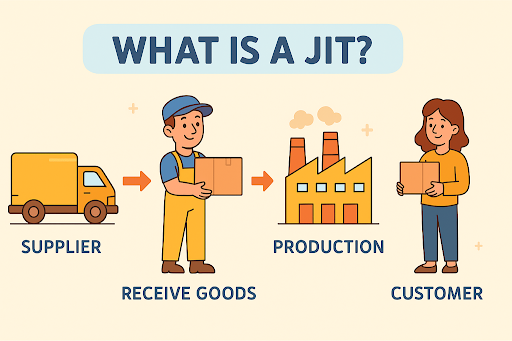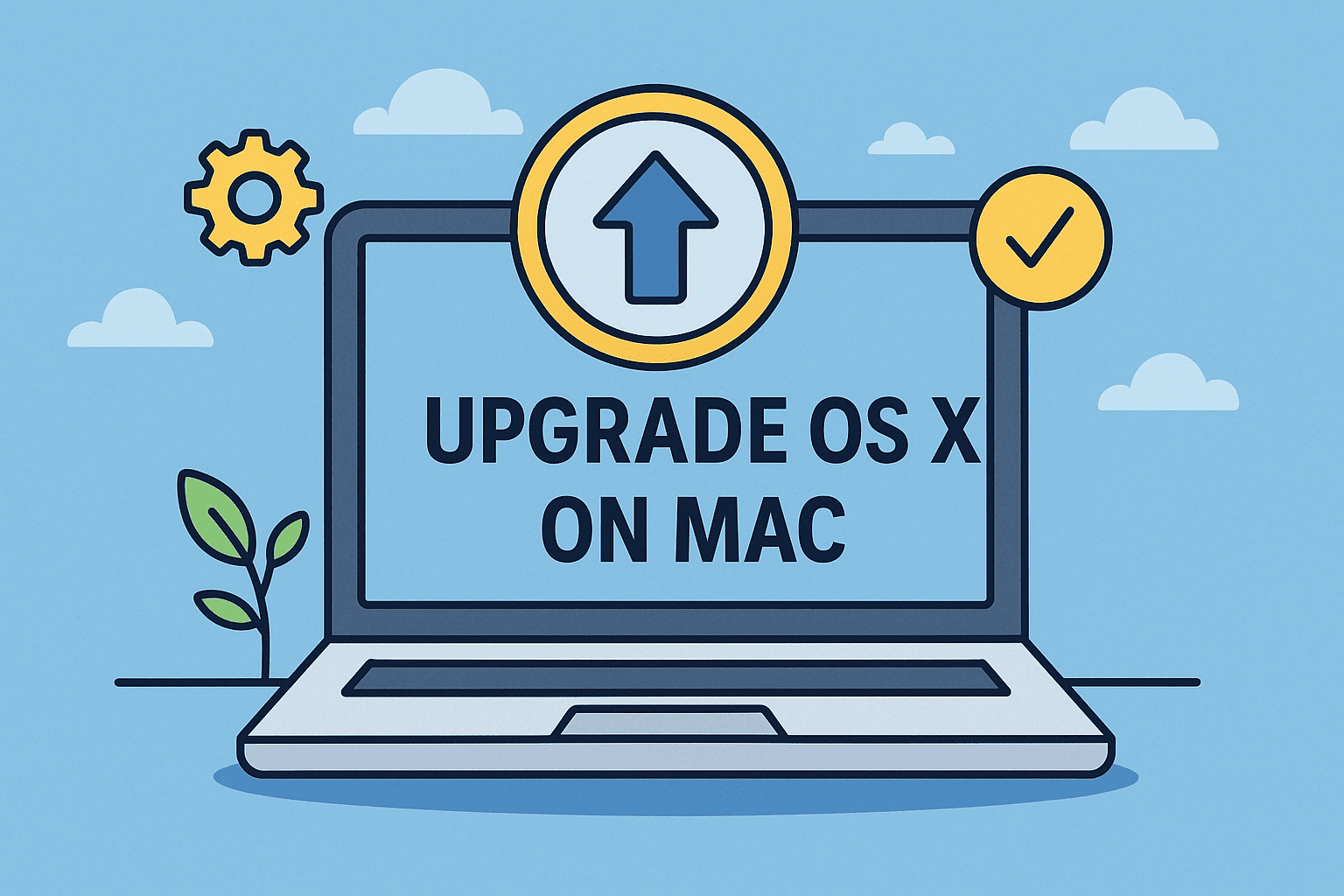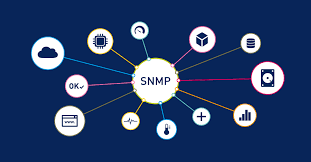Can You Afford to Waste Time and Resources?
Updated on June 18, 2025, by ITarian

In a world of rapid innovation and razor-thin margins, the ability to streamline operations can be the difference between growth and stagnation. That’s why so many companies ask: what is a JIT system, and how can it improve efficiency?
JIT, or Just-In-Time, is a revolutionary approach to inventory management and production that eliminates waste, reduces cost, and improves workflow. This lean methodology has transformed industries from automotive to cybersecurity product development.
In this comprehensive guide, you’ll learn what JIT is, how it works, its benefits and challenges, and how it compares to traditional systems like MRP (Material Requirements Planning).
What is a JIT System?
Just-In-Time (JIT) is a production and inventory management strategy where materials and products are acquired or manufactured only when needed—not before.
Instead of stockpiling supplies or overproducing products, JIT aims to:
- Reduce inventory holding costs
- Minimize waste
- Improve operational agility
Originally pioneered by Toyota in the 1970s, JIT has become a core principle of Lean manufacturing, valued in industries that demand speed, precision, and efficiency.
How Does a JIT Inventory System Work?
A JIT inventory system relies on real-time demand signals. When a customer places an order, or a component is needed for assembly, the system triggers procurement or production. This approach relies heavily on tight coordination between suppliers, warehouses, and production lines.
Key Elements of a JIT Inventory System:
- Demand forecasting using real-time data
- Strong supplier relationships for fast delivery
- Minimal buffer stock
- Quick turnaround on orders
- Streamlined workflows and automation
Benefits for IT & Cybersecurity Sectors:
For tech companies, especially those producing hardware or firmware, a JIT model allows leaner operations with rapid scalability. No more warehouse full of outdated chips or components.
What is JIT Production?
JIT production refers specifically to the manufacturing side of the Just-In-Time methodology. Here, production doesn’t begin until a customer order is received or a specific requirement is triggered. This ensures that every resource—labor, materials, equipment—is used only when necessary.
JIT Production Example:
In a software security firm, features aren’t coded and deployed months in advance. Instead, modules are built just in time based on customer needs, current threats, or agile sprint goals.
Common Applications of JIT Production:
- Automobile manufacturing
- Electronics assembly
- Software development in DevOps environments
- Cloud infrastructure provisioning
Advantages of JIT: Why Businesses Adopt It
Implementing a JIT system can bring significant benefits. Here’s why companies across industries—from manufacturing to cybersecurity—use JIT:
🔹 Reduced Waste
- Eliminate overproduction and excess inventory.
- Minimize costs associated with storing, insuring, or disposing unused stock.
🔹 Improved Cash Flow
- Less capital tied up in inventory.
- More resources available for innovation, talent, or marketing.
🔹 Enhanced Efficiency
- Faster response to demand changes.
- Streamlined operations improve team productivity.
🔹 Higher Product Quality
- Errors can be detected and fixed early.
- Production is more focused and controlled.
🔹 Better Supplier Collaboration
- Real-time coordination strengthens supply chain resilience.
JIT vs MRP: A Comparative Breakdown
Both JIT and MRP (Material Requirements Planning) aim to manage resources efficiently—but they take very different approaches.
| Feature | JIT (Just-In-Time) | MRP (Material Requirements Planning) |
| Inventory Strategy | Minimal stock; order as needed | Pre-planned based on forecasts |
| System Complexity | Simple, reactive | Complex, predictive |
| Cost of Holding Stock | Low | High (more buffer inventory) |
| Risk Level | High if supply chain is disrupted | Lower risk with pre-allocated materials |
| Flexibility | High responsiveness | Slower to adapt to sudden changes |
| Best For | Agile, fast-moving industries | Stable, predictable production environments |
🔍 Key Insight: JIT is ideal for fast-paced tech environments, while MRP suits traditional manufacturing with steady demand.
Challenges of Implementing JIT
While the advantages of JIT are compelling, it’s not without challenges. Here’s what to be cautious of:
🔸 Supply Chain Disruptions
JIT relies on perfect timing. A single delay in supplier delivery can halt the entire operation.
🔸 Higher Vendor Dependence
Your suppliers need to be extremely reliable, or the system fails.
🔸 Limited Flexibility in Sudden Demand Surges
If customer demand spikes unexpectedly, JIT may struggle to catch up.
🔸 Requires Accurate Forecasting
Without precise data, the JIT system can backfire.
Pro tip: Pair JIT with robust analytics and automated supply chain tools to mitigate risk.
Best Practices for a Successful JIT Implementation
Thinking of integrating a JIT inventory system into your organization? Follow these strategic steps:
✔️ Establish Strong Supplier Relationships
- Choose partners with proven reliability and flexible logistics.
✔️ Invest in Real-Time Data Systems
- Use AI and analytics to monitor demand and adjust supply flows instantly.
✔️ Lean Training for Teams
- Educate your workforce on lean principles and continuous improvement.
✔️ Pilot Before Scaling
- Start small with one department or product line, then expand.
✔️ Implement Contingency Plans
- Always prepare backup options in case of unexpected disruptions.
Industries Benefiting from JIT
- Cybersecurity Hardware Providers
- Avoid overproduction of devices in a rapidly evolving tech landscape.
- Software & SaaS
- Agile development mirrors JIT principles—build only when needed.
- Manufacturing & Logistics
- Precision timing keeps costs low and output high.
- Retail
- Dynamic inventory based on real-time consumer behavior.
FAQs About JIT
1. What is a JIT strategy in business?
JIT (Just-In-Time) is a strategy that aims to reduce waste and improve efficiency by receiving or producing goods only when needed, not in advance.
2. How is JIT different from traditional inventory systems?
Traditional systems keep large stocks in anticipation of demand. JIT keeps minimal stock and relies on real-time needs.
3. Is JIT suitable for all companies?
No. JIT works best in industries with predictable demand and high supplier reliability. Unpredictable markets may face challenges.
4. Can JIT be used in IT or cybersecurity companies?
Absolutely. Agile workflows, CI/CD, and cloud provisioning all align with JIT principles—build, deploy, or scale only when required.
5. What tools support JIT implementation?
ERP platforms, supply chain automation, predictive analytics, and cloud-based inventory systems all support JIT models.
Final Thoughts: Is JIT Right for Your Business?
Just-In-Time is more than an inventory system—it’s a business philosophy that emphasizes lean operations, agility, and responsiveness. If implemented correctly, it can deliver exceptional efficiency, reduce costs, and make your business more competitive.
But success requires discipline, accurate forecasting, and solid infrastructure. Whether you’re in cybersecurity or supply chain logistics, understanding what a JIT system is could be your secret to scalable, sustainable growth.
👉 Looking to streamline your operations with security in mind? Start with Itarian today.














